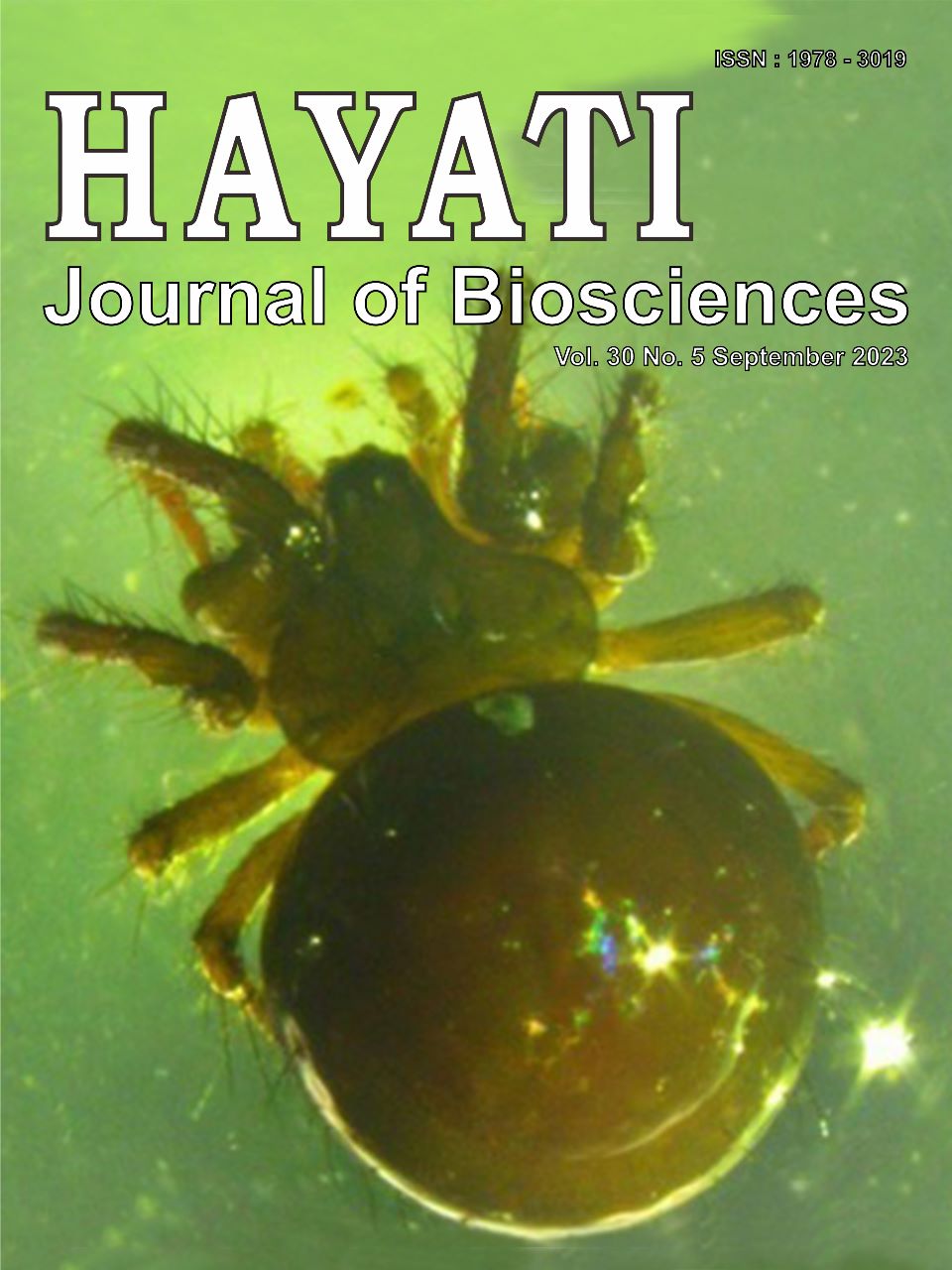The Effect of Cryopreservation on Cytochrome Oxidase1 (CO1) Gene and the Relationship with Spermatozoa Motility of Albino Pangasius catfish (Pangasionodon hypophthalmus)
DOI:
https://doi.org/10.4308/hjb.30.5.825-833Abstract
Cryopreservation is a technique for storing cells and tissues at very low temperatures for the possible usage of the stored cells and tissues throughout the year. Sperm cell cryopreservation in some species causes a decrease in sperm quality and DNA damage. Inappropriate cryopreservation protocols can cause changes in sperm physiology. Mitochondria are organelles that play a role in producing energy for sperm motility. Mitochondria have DNA molecules with small sizes compared to structures from nuclear DNA. This study analyzed the effect of cryopreservation on sperm motility and the Cytochrome Oxidase1 (COI) gene. The CO1 gene in mitochondrial DNA plays a role in energy production for spermatozoa motility. The cryopreservation was performed using skim milk and 10% methanol cryoprotectant, and the temperature in the equilibration process was 4-5°C for 10 minutes. Cryopreservation took place for 14 days in the freezer at -80°C. In addition, the thawing process was performed for 1-2 minutes at 40°C. This study found that the number of lesions per 10 kb in the CO1 gene in post-equilibration spermatozoa was (9.24±3.74), and post-thawing spermatozoa (was 10.26±7.54). Spermatozoa motility was obtained in fresh spermatozoa, i.e., 87±1.5%, post-equilibration spermatozoa 79±4.5%, and post-thawing spermatozoa 30±3.2%. This study concluded that cryopreservation of spermatozoa causes CO1 gene lesions and that in cryopreserved spermatozoa, there is a decrease in spermatozoa motility compared to fresh spermatozoa.
Downloads
Downloads
Published
Issue
Section
License
HAYATI J Biosci is an open access journal and the article's license is CC-BY-NC. This license lets others distribute, remix, tweak, and build upon author's work, as long as they credit the original creation. Authors retain copyright and grant the journal/publisher non exclusive publishing rights with the work simultaneously licensed under a https://creativecommons.org/






















.png) Bogor Agricultural University
Bogor Agricultural University Department of Biology
Department of Biology The Indonesian Biological Society
The Indonesian Biological Society 

